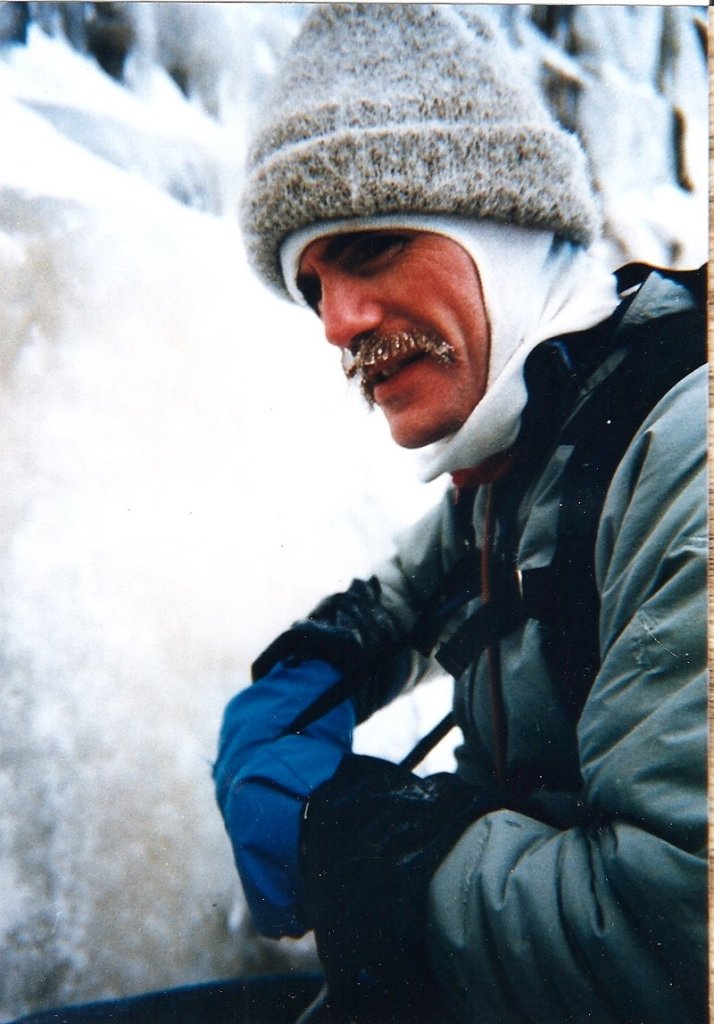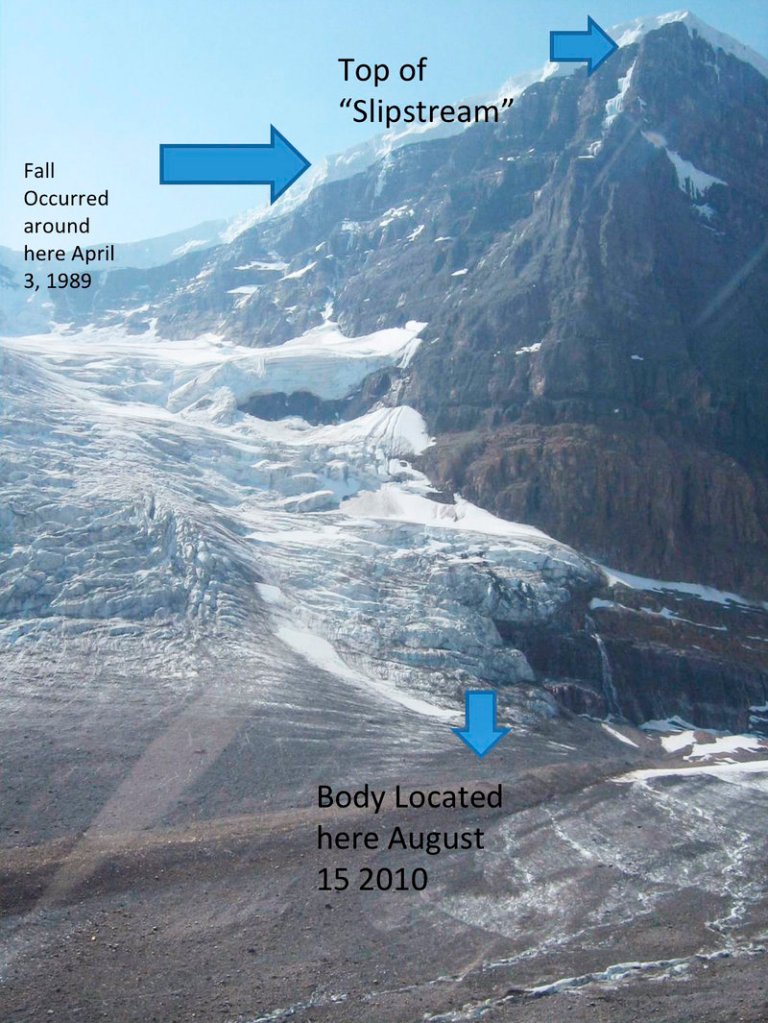A flash of yellow at the base of a glacier led hikers to the body of a Maine man who fell to his death more than 20 years ago in the Canadian Rockies.
In April 1989, William Holland, a 39-year-old geologist from Gorham, was ice climbing in Jasper National Park in Alberta. He and his climbing partner had reached the summit of the treacherous Slipstream route on Snow Dome, an 11,339-foot mountain, when a cornice beneath Holland collapsed.
He was presumed dead after two days, as rescuers were unable to find him and an avalanche buried the area.
On Aug. 15 of this year, two day hikers in the park’s Columbia ice fields noticed something bright yellow in the landscape. They made their way to the object at the base of Dome Glacier and discovered Holland’s body – still clad in a yellow jacket, along with a red pack and purple boots, said Garth Lemke, a public safety specialist with Parks Canada in Jasper.
Holland’s body had moved, with the glacier, more than half a mile from the site of his fall. “He spent 21 years in a deep freeze,” Lemke said.
The body was recovered the next day by a helicopter crew. The Royal Canadian Mounted Police notified Holland’s family last week after using dental records to confirm that it was his body.
“It’s been so long. It’s a phone call you never expect to receive after the first couple of years,” said his daughter, Laurel Holland of New York City. “There was that hope, and it just dies after a while.”
Laurel Holland and her mother, Anne Holland Bateman of Walla Walla, Wash., plan to go to Edmonton in a couple of weeks to have the body cremated.
They expect to have a service and spread Holland’s ashes next summer, possibly in Canada – where he spent a lot of time, his daughter said.
“That was probably where he was happiest. It would be fitting,” she said.
Originally from Delaware, Holland graduated from Colby College in Waterville and returned to Maine after studying at Western Washington State College and Boston University.
He and his wife lived in Portland and in Gorham. He worked as a senior geologist for Robert G. Gerber Inc. of Freeport.
After Holland’s death, his wife and daughter moved to Walla Walla, his wife’s hometown.
Holland was an experienced climber whose accomplishments included an ascent of Mount McKinley in Alaska, North America’s highest peak. He was planning an expedition to Nepal in 1990 to climb Ama Dablam in the Himalayas.
Lemke said Slipstream is a technical ice climb with significant hazards, including vertical ice and house-sized crevasses.
According to a news account at the time of the accident, Holland and his climbing partner, Chris Dube of Arlington, Mass., had been in the ice fields for a week and had made several ascents to the top of Snow Dome.
On the day of the accident, they started out in good weather, but conditions deteriorated as they went up Slipstream.
Laurel Holland said her father saw climbing as his way of reaching beyond the banality of day-to-day life, despite suffering early-onset arthritis as a result of frostbite.
“It was an incredible high for him to be able to achieve something so awesome,” she said. “It was like he was talking to God in some ways.”
Staff Writer Ann S. Kim can be contacted at 791-6383 or at: akim@pressherald.com
Send questions/comments to the editors.




Success. Please wait for the page to reload. If the page does not reload within 5 seconds, please refresh the page.
Enter your email and password to access comments.
Hi, to comment on stories you must . This profile is in addition to your subscription and website login.
Already have a commenting profile? .
Invalid username/password.
Please check your email to confirm and complete your registration.
Only subscribers are eligible to post comments. Please subscribe or login first for digital access. Here’s why.
Use the form below to reset your password. When you've submitted your account email, we will send an email with a reset code.